Corrosion of Silver-Plated Copper Conductors - NEPP
Corrosion of Silver-Plated Copper Conductors - NEPP
Corrosion of Silver-Plated Copper Conductors - NEPP
You also want an ePaper? Increase the reach of your titles
YUMPU automatically turns print PDFs into web optimized ePapers that Google loves.
318<br />
The test environment ensures that the silver-plated conductors <strong>of</strong> the sample are<br />
subjected to a 100% relative humidity, saturated in oxygen, at 58°C. The specified test<br />
duration is 240h (10d), but some duplicate samples were also tested for periods <strong>of</strong><br />
between 90 and 108 h (approximately 4.5 d). At the end <strong>of</strong> the test period the samples<br />
were removed from the flasks and stripped <strong>of</strong> their various insulating layers. The<br />
silver-plated strands were inspected within 3h <strong>of</strong> their removal from the test jig. The<br />
extent <strong>of</strong> corrosion (per 200mm sample) was based on the following visual inspection<br />
criteria:<br />
Code Extent <strong>of</strong> corrosion<br />
0 None<br />
1 One Point, on one or two adjacent strands<br />
2 Slight, on two to eight adjacent strands in one location along sample length<br />
3 Moderate, two to eight adjacent strands in a few locations along sample length<br />
4 Moderate, two to ten adjacent strands in several locations along sample length<br />
5 Severe <strong>Corrosion</strong>, affecting more than 50% <strong>of</strong> the total strands from any conductor in any<br />
one location<br />
Codes 0 to 4 would not be expected to affect the electrical service properties <strong>of</strong> the<br />
wire/cable.<br />
These codes are based on subjective visual inspections. The extent <strong>of</strong> corrosion<br />
was later quantified by means <strong>of</strong> metallographic preparations.<br />
Analysis <strong>of</strong> water from accelerated test<br />
The initial EDAX and AES analyses <strong>of</strong> the corroded braids detected the presence <strong>of</strong><br />
varying amounts <strong>of</strong> chlorine and fluorine on the surface and subsurface <strong>of</strong> those<br />
silver-plated strands. Soluble chloride and fluoride ions might be expected to affect<br />
the rate <strong>of</strong> reaction at any electrochemical corrosion couple. The conditions <strong>of</strong> the<br />
accelerated corrosion test ensure that water, condensed onto the exposed silver<br />
strands, is drawn by capillary attraction into the strand interstices/insulation voids<br />
along the sample length. This water will dissolve soluble ions from the silver surface,<br />
which will migrate down the sample interior and drip back into the conical flask. At<br />
the end <strong>of</strong> the 240 h test period, the flask waters were sent for analysis at the Central<br />
Laboratory <strong>of</strong> the Nederlandse Organisatie voor Toegepast Natuurwetenschappelijk<br />
Onderzoek (TNO).<br />
The fluoride content was determined by an autoanalyser with a fluoride electrode in<br />
the buffered sample solution (accuracy > 5%). The chloride content was determined<br />
using Instrumental Neutron Activation Analysis (INAA). To improve the detection<br />
limit, 3ml <strong>of</strong> the sample solutions were evaporated at 60°C. The remains were<br />
neutron-irradiated for 30min with a neutron flux <strong>of</strong> 10 13 neutrons/cm 2 /s. A Ge(Li)<br />
detector recorded the gamma spectrum, from which the trace elements and their<br />
concentrations could be determined. The conditions for these analyses provided for an<br />
accuracy <strong>of</strong> 5 -10%.<br />
Metallography<br />
The method <strong>of</strong> metallographic preparation followed that described on page 311.<br />
Generally, only single strands were longitudinally sectioned after they had been cut<br />
from the tested wires/cables. Occasionally the entire wire or cable was mounted and<br />
complete transverse sections made across sites <strong>of</strong> corrosion.<br />
Wire- and cable-material variables<br />
a. Conductor strands, copper finished with:<br />
- 2 μm silver, 1 μm silver<br />
- 1 μm nickel with flash <strong>of</strong> silver<br />
- tin<br />
- nickel<br />
ESA Journal 1984, Vol. 8



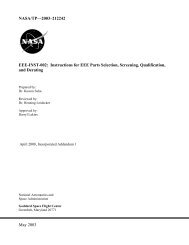

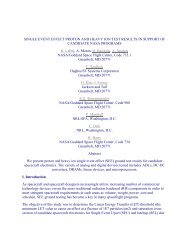
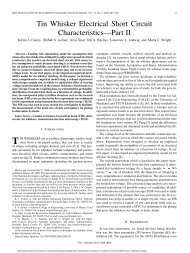
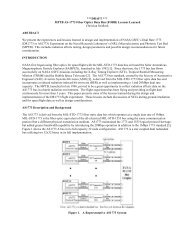

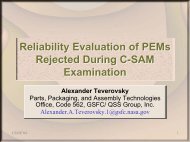
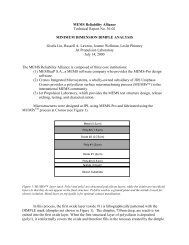
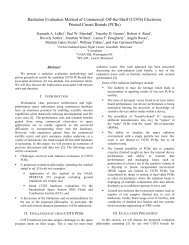
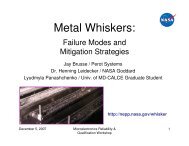
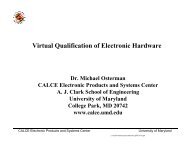
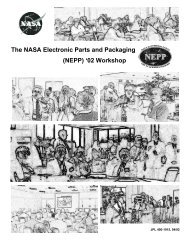
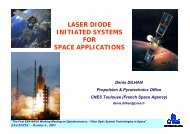
![mil-std-2223 [test methods for insulated electric wire] - NEPP](https://img.yumpu.com/4036001/1/190x249/mil-std-2223-test-methods-for-insulated-electric-wire-nepp.jpg?quality=85)